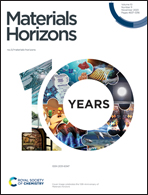Emergence of magnetic nanoparticles in photothermal and ferroptotic therapies
Abstract
With their distinctive physicochemical features, nanoparticles have gained recognition as effective multifunctional tools for biomedical applications, with designs and compositions tailored for specific uses. Notably, magnetic nanoparticles stand out as first-in-class examples of multiple modalities provided by the iron-based composition. They have long been exploited as contrast agents for magnetic resonance imaging (MRI) or as anti-cancer agents generating therapeutic hyperthermia through high-frequency magnetic field application, known as magnetic hyperthermia (MHT). This review focuses on two more recent applications in oncology using iron-based nanomaterials: photothermal therapy (PTT) and ferroptosis. In PTT, the iron oxide core responds to a near-infrared (NIR) excitation and generates heat in its surrounding area, rivaling the efficiency of plasmonic gold-standard nanoparticles. This opens up the possibility of a dual MHT + PTT approach using a single nanomaterial. Moreover, the iron composition of magnetic nanoparticles can be harnessed as a chemotherapeutic asset. Degradation in the intracellular environment triggers the release of iron ions, which can stimulate the production of reactive oxygen species (ROS) and induce cancer cell death through ferroptosis. Consequently, this review emphasizes these emerging physical and chemical approaches for anti-cancer therapy facilitated by magnetic nanoparticles, combining all-in-one functionalities.

- This article is part of the themed collection: Recent Review Articles


 Please wait while we load your content...
Please wait while we load your content...